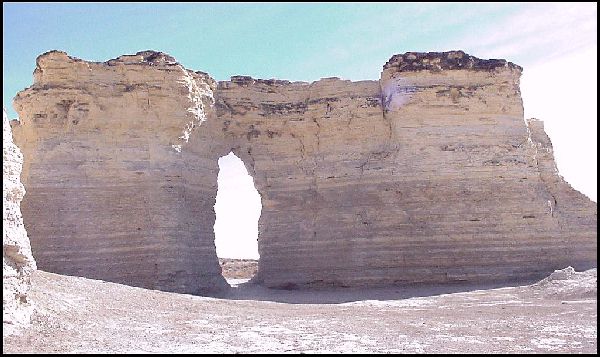Field Work in Kansas and Texas
339
----------------------
Field Work in Kansas and Texas
By
CHARLES H. STERNBERG.
On April 7, 1919, we left Lawrence in my Ford truck for western Kansas.
Mr. Knoblock, of Quincy, Ill., was my driver. After a very disagreeable journey of seven
days, on account of rain and bad roads, we reached Quinter, Kan. The next day we made our camp in Mr. Sampson’s pasture on
Hackberry creek. The canyons were filled with great snowdrifts, and the weather was
bad for some time.
Two miles east of camp I found a beautiful plate of the crinoid Unitacrinus socialis. They covered an area of eighteen
square feet. In one case the arcs were spread over the plate for over three feet. This I
sent to the state museum at Albany, N. Y.
After leaving this camp we went to the head of the canyon, east
of , in western Gove county. Mr. Lester Olds was my assistant, as Knoblock had returned
home. Here I discovered two very fine specimens.
340
Kansas Academy of Science.
The
first was a nearly complete skeleton, in its natural position, of the small Pteranodon. This is the only Pteranodon I ever discovered with the bones of the
skeleton in place. The American Museum had been unable to mount their skeletons, as the
normal position of the vertebra was unknown. They purchased this specimen and their
skilled preparator, Falkenback, prepared it.
The second specimen was a
nearly complete skeleton of Clidastes tortor
The skull is uncrushed
and shows the pterygoid bones, armed with teeth in -
front of the gullet. It is
twelve feet long and I have mounted it in panel.
I also secured one of the large Inoceramus shells, over three feet in length.
This I sent to the British Museum.
My
third camp was made at Mr. Martin’s ranch, south of Castle Rock, on
the brakes of the Smoky Hill river north of Utica. Here I was left entirely
alone and had a severe time of it. I was so fortunate, however (and that -,
really is what counts), as
to find a splendid skeleton of Platecarpus,
with all
the paddles, breastbones and cartilaginous ribs. Only a few terminal caudal ,
bones were missing from the
skeleton. I found it very difficult to handle the
big sections in which I took it up. There were two, and they weighed about
500 pounds each. However, by using all the
skill I had I succeeded in accomplishing the labor of turning them over. I have mounted
this skeleton in a panel. It is 18 1/2 feet long.
The second remarkable fossil vertebrate found here was the
skeleton of a Portheus. It was preserved from the pelvic fins to
the end of the tail, and is the largest Portheus I have seen. The spread of the tail fins
is five feet. In 1918 my son Levi found a
skull and body part of a Portheus that is so near in size to this one
that I have made a composite skeleton of the two. It is sixteen feet long and will be, as
I said, the largest bony fish ever collected from the Cretaceous.
I also found the tail fins, that are the same size as the ones missing from the
splendid skeleton we got on Butte Creek in 1918. This I have used in my panel mount of
this beautiful fish. It is thirteen feet long, and shows for the
first
tune the spines and supernumeraries. So the correct anatomy of this great fish can now be
correctly made out. The one I sent the American Museum years ago had no spines and they
were restored as straight, pointed shafts with supernumeraries terminating in clublike
ends. A number of others have been mounted that copied this error. In this specimen the
spines form a double curve and the supernumeraries the arc of a circle. They lie along the
upper curves of the dorsal spines. .
-----------------The
rest of the paper on collecting in Texas omitted-----------
|

